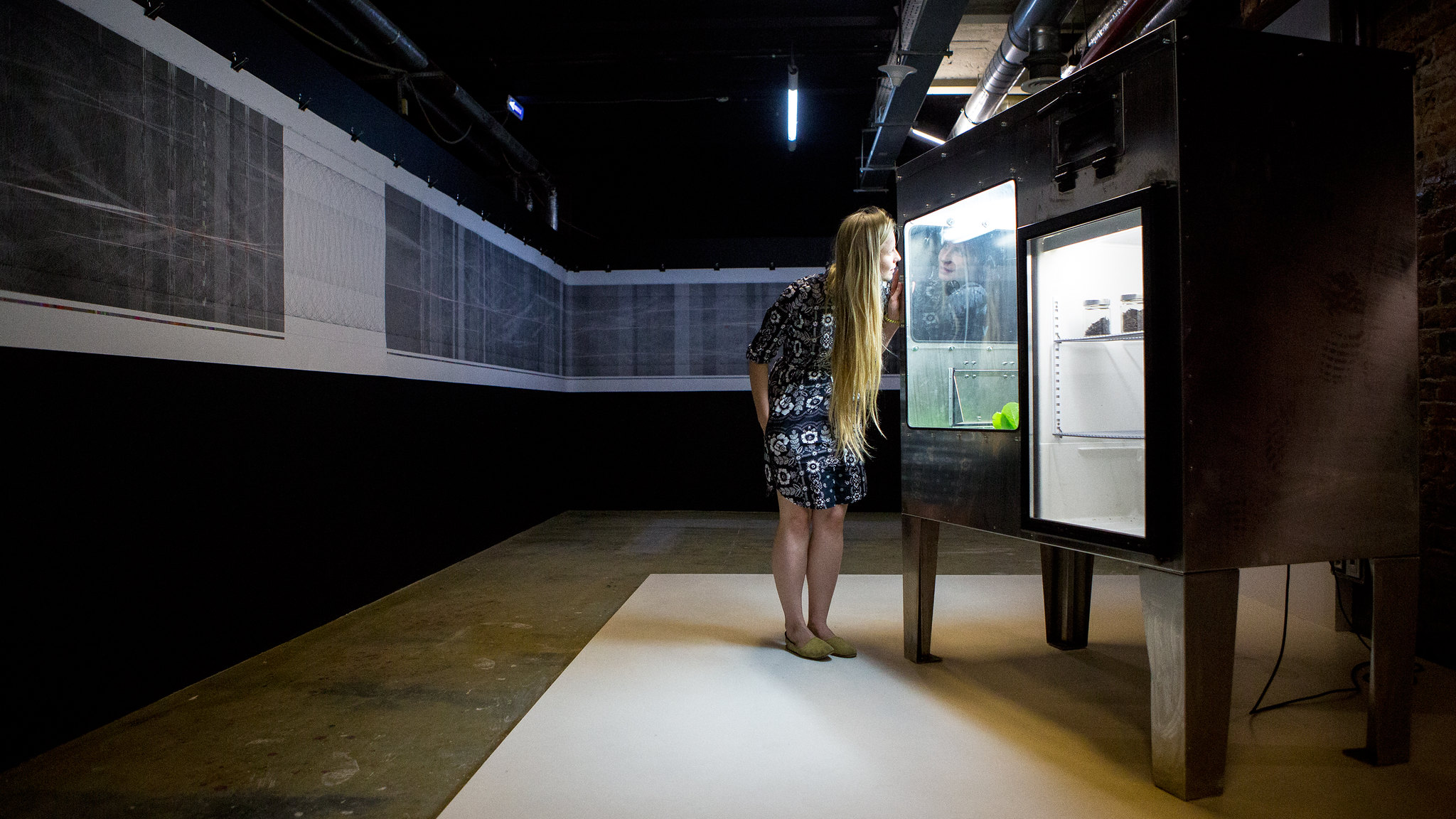The Polytechnic Museum in Moscow commissioned Ars Electronica Linz to curate the “EARTH LAB – Artists as Catalysts” exhibition, a collection of artistic projects dealing with key issues pertaining to our planet.
Type: Exhibition
Duration: June 22, 2016 – September 25, 2016
City, Country: Moscow, Russia
Venue: Red October chocolate factory, Moscow, Russia
The Polytechnic Museum in Moscow commissioned Ars Electronica Linz to curate the “EARTH LAB – Artists as Catalysts” exhibition, a collection of artistic projects dealing with key issues pertaining to our planet. In it, museum visitors are called upon to act as researchers and travelers on a journey of discovery along a parcours consisting of infographic sequences and experimental arrays, many of them interactive. The exhibition will run from June 21-September 25, 2016 at the former Red October chocolate factory in Moscow.
In an interview on the Ars Electronica Blog, the two curators, Natalia Fuchs and Manuela Naveau, brief us about this remarkable lab on the underground level of Moscow’s Red October chocolate factory.

Artists as Catalysts
The Polytechnic Museum in Moscow and Ars Electronica Linz invite visitors to partake of a stimulating encounter with important issues having to do with our planet. Visitors become researchers in EARTH LAB, a fascinating mix of exhibits, participative infographics and a discursive ancillary program. The artworks are designed to stimulate creative processes and encourage people to look at the Earth from a very different perspective for a change. But the site of this rethinking process isn’t a museum or some other established institution; it’s the basement of the mothballed Red October chocolate factory in the heart of Moscow.
Of course, a laboratory is a place that isn’t usually open to the public. It’s where specialized knowledge culminates in the hope of generating new insights. The experiments conducted in labs aren’t always successful and their aim isn’t necessarily to promote the general wellbeing. Furthermore, the intentions and agendas behind these research initiatives are tremendously wide-ranging. Nevertheless, a lab’s mission is always the same: generating new knowledge.

So then, let’s put our heads together and conduct a thought experiment:
- What if we consider our planet to be a laboratory?
- What are the facts & circumstances, what are the challenges and issues we’re facing, and which methods of arriving at insights can we apply?
- To what extent do we understand our world?
- Can we come up with fictional theses and utopias for a shared future, and isn’t it even the case that such experiments are essential to the rethinking process at a time in which everyone’s talking about change?
- For instance, why aren’t we snacking on insect bars now that nutritional as well as environmental considerations suggest that this is the way to go?
- And in light of the fact that the number of cells that make up the human body is only a tenth of the number of bacteria living in and on it, than is it perhaps the case that microorganisms are what ultimately govern the human species?
- Are flies the garbage-busters of the future, and might artificial leaves counteract the increasing pollution of our air?
- What sort of noise does the Earth make, how does its “pulse” sound, and why is it revolving slower and slower?
These and many other questions occupy our attention in EARTH LAB, along with the artists whose experimental approaches are meant to catapult us beyond run-of-the-mill trains of thought and thereby enable us to view our world from a fresh perspective or reconceive it altogether. And these artists are also the ones who are critically questioning whose interests are behind the generation of new knowledge, who’s supporting which experiments, and what knowledge is being made public and what’s being hushed up.
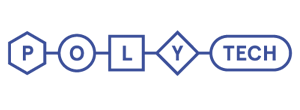

Credits:
Curators of the EARTH LAB: Manuela Naveau, Natalia Fuchs
Russian commission co-curator: Alexey Shcherbina
Frame program co-curators: Natalia Fuchs, Alexey Shcherbina
Project manager: Anna Firainer
Technical direction: Klaus Dieterstorfer
Technical support: SilaSveta, Gustavo Valera
Infographics: Stefan Eibelwimmer, Nicolas Naveau
Coordination: Fedor Vladimirov
A project supported by Austrian Cultural Forum Moscow
About Measuring…
In the exhibition’s entry area, we’re greeted by cloud images by Shinseungback Kimyonghun, a Korean artists’ collective. It might seem odd that an exhibition entitled EARTH LAB starts off by peering into the heavens, but it’s precisely this point of view that tells us that our observation point here on Earth is, above all, what shapes our perception of the world. Only from our own planet can we consider the clouds from this angle. But the work conveys something else too—we can recognize faces, “Cloud Faces”. These faces that are, normally, barely recognizable pose no problem at all to facial recognition software and a conventional, commercially available camera. And this software algorithm is also what enables our perception to recognize faces where there are none. The fact that we can perceive faces is due, on one hand, to our perceptive faculties, and, on the other, to machines that conjure up for us a world free of emotion and intuition.
Algorithms perform computational tasks for us, and computer-supported algorithms calculate our complex realities. But the questions that arise are: What’s behind the algorithms, and whether that which some computational sequences generate is more along the lines of non-knowledge?
A work by Austrian artist Leo Peschta goes a step further. “Zermesser” is by all means a measuring instrument, albeit one that measures spaces and then immediately discards the data. A process of measuring for measuring’s sake seems, on one hand, to symbolize the high expectations invested in empirically gathered measurement data and, at the same time, takes systematic measuring to the point of absurdity and thereby enunciates the artist’s opinion that not everything on our planet can be measured.
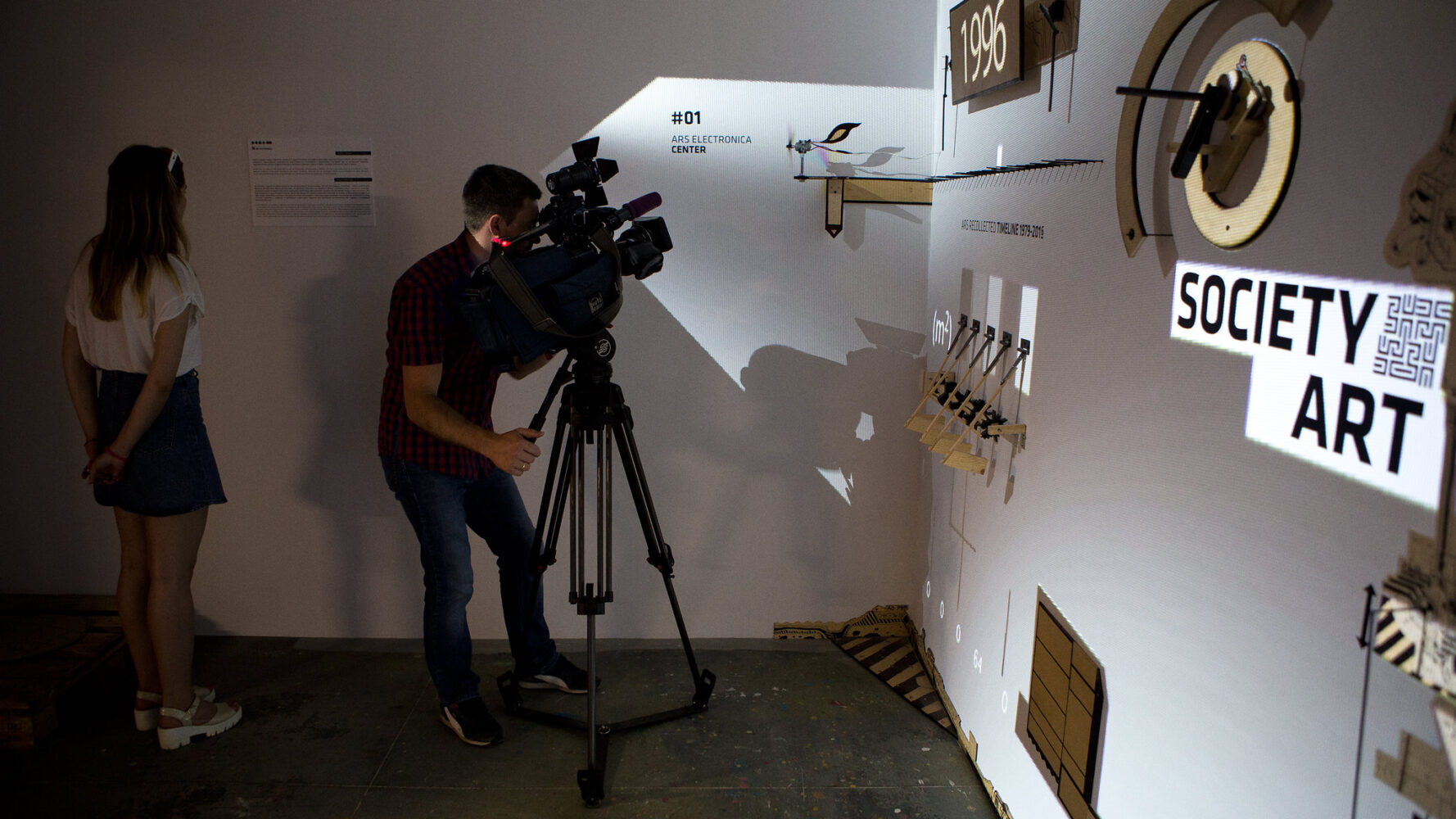
A measurement of Ars Electronica Linz is the bold undertaking of Polish artist Marek Straszak. His installation “ARS Recollected” visualizes an archive of data and uses infographics, animation, video mapping and kinetic objects to demonstrate how measurements and data can be experienced.
… and about Coincidence
In Sonja Bäumel’s “expanded self II”, it’s happenstance that endows this experimental array with the glamour it displays. In a Petri dish almost as large as a human being, she’s made imprints in the medium with her own body and thereby introduced bacteria that grow and multiply during the exhibition’s run. Although the artist is able to make general prognoses on the basis of prior measurements, each artistic bodily impression in Sonja Bäumel’s work is nevertheless an original. The growth of her collected microorganisms can indeed be measured and controlled, but not all of the parameters to which this work is subject are known or controllable.

Another opportunity to consider the significance of chance in laboratories is provided by Ursula Neugebauer’s work. Movement is the element that imparts body to the hanging garments, whereas standstill is disembodied. However, “Tour en l’Air” has its own rhythm and it seems to be incomprehensible just when which article of clothing starts to rotate. The work is apparently under the influence of a living algorithm as it executes its performance—kinetic elements that come across to the observer as unperturbed, self-sufficient and random.
On Invisible Parameters…
The fortuitous often garners high praise in art; in scientific research, on the other hand, accidents have to be quantified. But since coincidence is usually the upshot of unknown parameters, the lab worker’s task is to unmask the magic of such quirks. But Japanese artists Yasuaki Kakehi, Kono Michinari and Takayuki Hoshi don’t subscribe to this strategy, despite being thoroughly familiar with standing waves and acoustic levitation. Their approach is to create a sort of fruit fly, a tiny Styrofoam particle that’s made to hover by means of sound waves beyond the range of human hearing. “Lapillus Bug” playfully interacts with humans and reacts to light and motion. And one could easily get the impression that the artists are intentionally working with the fascination of the apparently magical unknown.
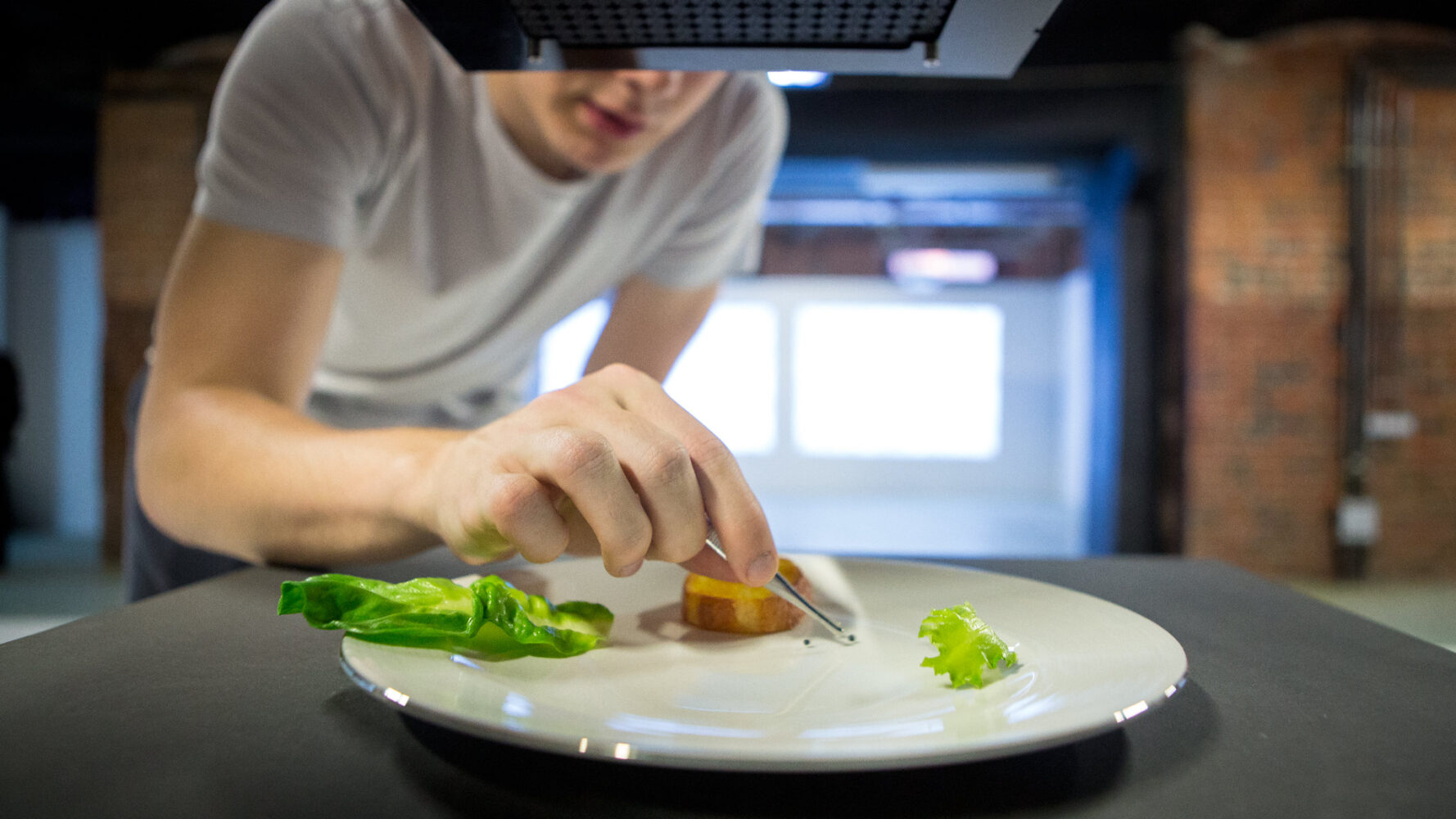
Another work that deals with a scientific phenomenon without thereby diminishing the luster of a mystical mise-en-scène is “Earth” by Icelandic artist Finnbogi Pétursson. Operating at a frequency of 7.8 Hz, this installation endeavors to make sound palpable as well as audible, and to visualize it in the form of waves on a water surface. This frequency precisely corresponds to a physical phenomenon known as the Schumann resonances that describe oscillations of the Earth’s electromagnetic field. For Pétursson, this frequency is our globe’s heartbeat. Its realm of effectiveness purportedly extends even into our sleep, and thus refreshes our connection to the Blue Planet on a daily basis.
… and Factors whose Influence is all too Visible
The exhibition’s final phase focuses above all on sociopolitical issues and environmental questions as further facets of the “Artists as Catalysts” subtitle.
Swiss artist Cornelia Hesse-Honegger is a scientific illustrator, artist and activist. She draws malformed bugs and reconnoiters places contaminated with radioactivity to conduct her visual research called “Seh-Forschung”. Hesse-Honegger can serve as a proxy for all those artists represented in the exhibition who address manmade disasters. In her recently published book “Die Macht der schwachen Strahlung” [The Power of Weak Radiation], Cornelia Hesse-Honegger describes “what remained hidden to conventional science: The dramatic increase in the number of deformed small organisms in the Chernobyl catastrophe’s fallout zone.”
Like Hesse-Honegger, the Hassani Brothers too are on a sociopolitical mission: deactivating minefields. Massoud and Mahmud Hassani emigrated with their parents to Holland from their native Afghanistan where, as children, they played in the desert, using paper to craft wind-powered objects that could fly above those mine-infested landscapes. This idea was the inspiration for their spherical mine detector equipped with GPS sensors. “Mine Kafon” is studded with landmine-triggering plates about the size of a human foot, and its weight is that of an average human being.
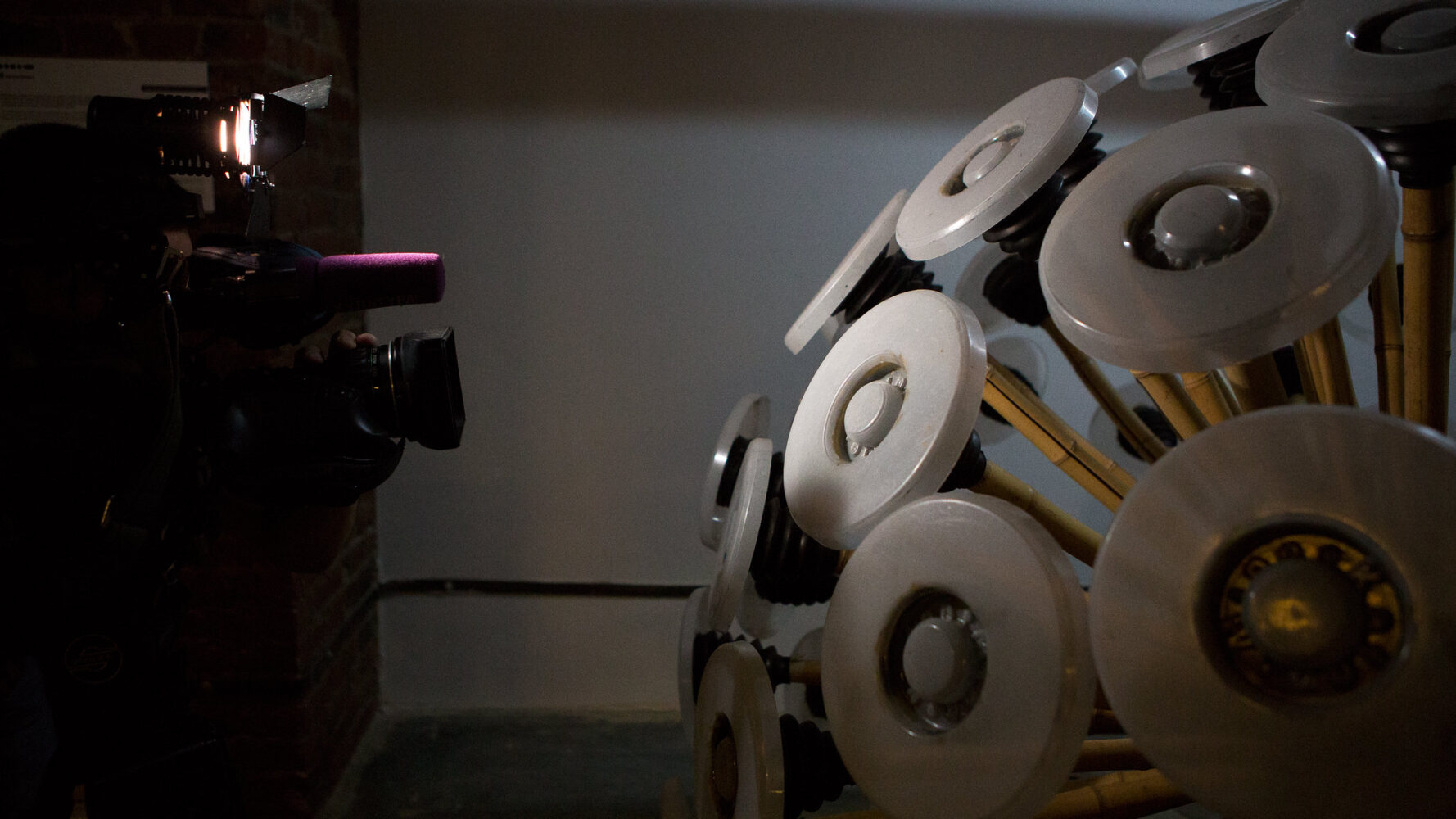
Italian artist Julian P. Melchiorri is taking on the increase in air pollution. The process of photosynthesis inspired his attempt to artificially develop foliage. “Silk Leaf” absorbs CO2 and produces oxygen as well as organic compounds by means of the photosynthetic capability of stabilized chloroplasts in silk protein. Could his artificial foliage be a feasible option for functionally rethinking urban façade ornamentation?

And even if some parameters in art stubbornly resist scientific demystification, they can still be a driving force fostering the emergence of solutions with great future promise. The idea that led to Búi Bj. Aðalsteinsson’s installation “The Fly Factory” was born when the young Icelandic artist happened upon an article about insects in which the Food and Agriculture Organization of the United Nations maintained: “If more people would eat insects it would reduce hunger and pollution as well as provide better nutrition.” The artist did research, set up his Fly Factory, bred the Black Soldier Fly, and processed its larvae into pâté and pudding.

Finally, we take leave of the exhibition with glimpses of our Blue Planet from outer space. Images provided by the European Space Agency (ESA) are meant to encourage us to take leave of our accustomed perspectives, though in doing so, exhibition visitors can choose just which images of our world they zoom in on.

The “ARTSAT: REPLAY” project takes the next step in these considerations: testing communication that goes beyond Earth’s surface. The “ARTSAT: Art and Satellite Project” installation consists of documentation of a satellite constructed by Japanese artists and sent into orbit at an altitude of 378 kilometers. The goal of this mission that ran for over six months was to transmit the spoken word, music and poetry, to capture and transmit visual data, and to communicate with ground control via a chatterbot program before the satellite burned up upon reentry into the Earth’s atmosphere.
The Russian Perspective

“Access point” by Dmitry Bulatov and Alexey Chebykin is an interactive multimedia project that serves to demonstrate the mediaeval optical technology and augmented reality technologies brought together. The project is based on the principle of “anamorphosis” of the Early Renaissance which consists in mathemati-cally verified images that form an easily recognizable picture due to an optical effect. The central construction that is 3D-printed according to this principle is reflected in a mirror cylinder shaped as Tatlin’s Tower (the Monument to the Third International, 1919-20). Seeing this model in a mobile device the visitors delve into a reality of the 1920s supplemented with the famous monument dedicated to the future global community. One of the innovative decisions of the project is how the image on the screen depends on the grass’s growth on the interactive model. At all times the process of information transmission implied the idea of instability of the environment and, consequently, controlled the possibility of its further.
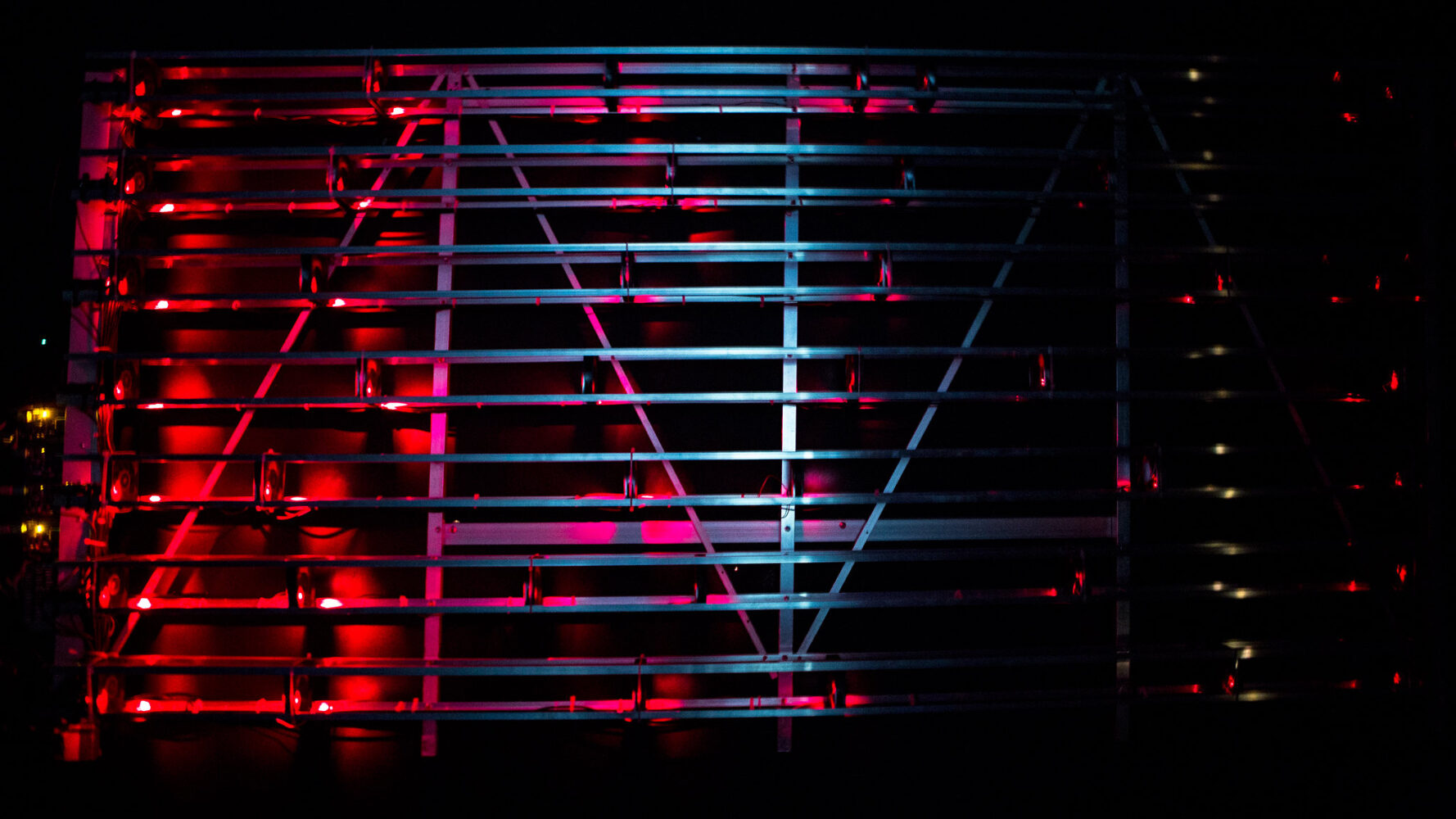
The central idea of the project “Divider” by ::vtol:: lies in an abstract artistic interpretation of the wave-particle duality concept that every physical object may be described mathematically in terms of wave quotations, as well as from a formalist point of view that conceives object as a particle or a particle system. As a textbook example of that duality, we can think of light as a particle (photon) flux, which works like an electromagnetic wave in various physical experiments. An artwork itself is a complex light and sound object in which directed light lines are divided by rotating mechanical fan repeatedly and sequentially, but not simultaneously – as to create a polyphase source of uncertain events. The uncertainty relation sets the lower limit for the product of the paired observables standard deviations. The principle of uncertainty discovered by Werner Heisenberg in 1927 is one of the milestones of quantum mechanics, and is a corollary of the wave-particle duality principle. Eventually, the divided and unstable system transforms into a set of binary states, which make light into a discrete message matrix, which, in turn, generates sound waves (a musical composition). Thus, the work attempts to use the experimental language of art to bring up and describe the global issues – is the universe discrete? can we describe the universe with the language of energy, frequency, and vibration – in accordance with the testament of Nikola Tesla?

We exist among the great variety of forms. Coming closer, hearing their voices, everyone reveals wonderful interconnections between phenomena. The key method of interaction with the installation’s abstract space called “All voices” by Moscow based art studio Stain is focused attention. Fixing the gaze, concentrating on an unique fragment, one may see deeper and better understand the structure of the world around. Can the knowledge be creativity? Where is the limit of the fragile balance between independence and influence? As the coloring light comes through, each form sounds and thus embodies the polyphony of the reality.
Plasticity of Flame by Yulia Glukhova: The flame is used as a medium for visualization of acoustical waves, revealing its plastics, usually controlled by nothing. A research of the potential of the sound to control burning substance from aesthetic point of view.
Flora communication methods are not available to mankind for understanding. In the project “Dendrophone”, the idea of the artist Vadim Kolosov is to give expression tool to the plants, to show their intentions and feelings – an ability to tell about how they feel. We set the reference parameters for the basic plant’s needs – lighting, soil moisture and CO2. Then, the actual parameters are compared with reference values, and the difference measures the plant’s “mood”, which signals with sound and light. Thus, the main idea of the project is to attract people’s attention to environmental problems, give the floral world an opportunity to express themselves through obvious and understandable mediums.
Artists as Catalysts
This experimental array is running for three months in the basement of the former Red October chocolate factory in the center of Moscow. The exhibition’s lineup of artworks is akin to a catwalk meandering among novel experimental prototypes accompanied and framed by infographics that call to mind the issues to which these artists are directing our attention.
Plus, spectators are cordially invited to supplement the information delivered on site with knowledge of their own, and complement the exhibition’s graphics with stickers and speech balloons of their own design. “Shadowgram,” an installation developed by Ars Electronica, is furnished as an interactive guest book for visitors’ comments; it’s meant to enable this space for reflection and manifestation to expand and undergo constant change throughout the show’s three-month run.
A specially developed ancillary program of speeches, performances, screenings and workshops will shed further light on what these artists are saying. Thus, “EARTH LAB – Artists as Catalysts” isn’t just an exhibition; it’s a temporary experimental array, a publically accessible lab, a thought-centered venue in which experiential processes are set in motion and knowledge is discussed and conveyed in concerted efforts.
